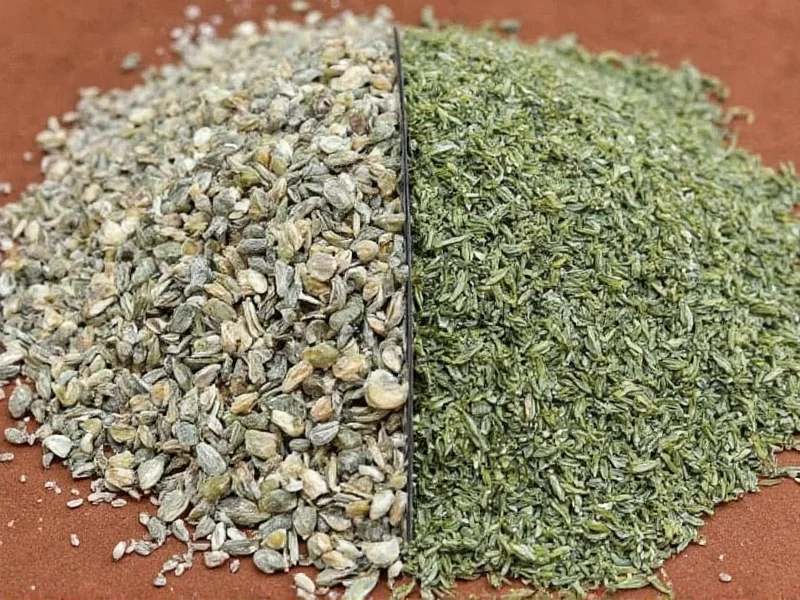Understanding Rubbed Sage
Rubbed sage, sometimes called rubbed leaf sage, begins as whole dried sage leaves. The production process involves rubbing these dried leaves through a screen or sieve, which separates the brittle leaf material from the stems while creating a light, airy texture. This method preserves more of the herb's essential oils compared to grinding, resulting in a product with distinctive flavor characteristics.
The texture of rubbed sage resembles fine sawdust or fluffy powder, but with visible leaf fragments. This unique consistency allows it to distribute more evenly in certain recipes while providing subtle bursts of flavor. Professional chefs often prefer rubbed sage for dishes where they want sage flavor without overwhelming other ingredients.
Understanding Ground Sage
Ground sage undergoes a more intensive processing method where dried sage leaves are completely pulverized into a fine powder. This creates a uniform consistency similar to other ground spices like cinnamon or nutmeg. The grinding process releases more essential oils initially but also causes them to dissipate faster, resulting in a more potent but less complex flavor profile.
Because of its fine texture, ground sage integrates completely into dishes, creating an even distribution of flavor throughout. This makes it particularly useful in spice blends, rubs, and recipes where a consistent sage presence is desired. However, its potency means you typically need less ground sage than rubbed sage to achieve similar flavor intensity.
Key Differences Between Rubbed and Ground Sage
| Characteristic | Rubbed Sage | Ground Sage |
|---|---|---|
| Texture | Light, fluffy with visible leaf fragments | Fine, uniform powder |
| Flavor Intensity | Milder, more nuanced | Stronger, more immediate |
| Essential Oil Content | Higher retention | More initial release but faster dissipation |
| Shelf Life | 6-12 months | 3-6 months |
| Best Culinary Applications | Delicate sauces, poultry dishes, stuffing | Meat rubs, hearty stews, sausage making |
When to Use Each Type of Sage
Choosing between rubbed sage vs ground sage depends on your specific recipe requirements. For delicate dishes like creamy sauces, light poultry preparations, or vegetable dishes where you want subtle sage notes, rubbed sage works best. Its milder flavor won't overpower other ingredients, and the small leaf fragments provide pleasant texture elements.
For robust recipes such as meat rubs, hearty stews, sausage making, or dishes requiring long cooking times, ground sage delivers more consistent flavor penetration. The difference between rubbed sage and ground sage becomes particularly important in recipes where spice distribution affects the final product.
Many home cooks wonder about rubbed sage substitution for ground sage. As a general rule, use 1½ teaspoons of rubbed sage to replace 1 teaspoon of ground sage. This accounts for the difference in concentration and ensures your dish doesn't become overpowering.
Storage Recommendations
Proper storage significantly impacts how long your sage maintains its flavor. Both types should be stored in airtight containers away from light, heat, and moisture. However, due to its more exposed surface area, ground sage loses potency faster than rubbed sage.
Rubbed sage typically maintains good flavor for 6-12 months when stored properly, while ground sage begins losing its optimal flavor after 3-6 months. For the best culinary results with either form, check the aroma before use - fresh sage should have a strong, pleasant herbal scent.
Culinary Applications Guide
Best uses for rubbed sage:
- Traditional Thanksgiving stuffing recipes
- Creamy pasta sauces where texture matters
- Butter sauces for fish or poultry
- Light vegetable dishes like roasted squash
- Homemade sausage where visible herb flecks are desirable
Best uses for ground sage:
- Meat rubs for pork or poultry
- Hearty bean soups and stews
- Commercial sausage production
- Spice blends where uniform texture is essential
- Recipes requiring long cooking times where flavor integration is key
Making Your Own Rubbed Sage
If you're interested in the difference between rubbed sage and ground sage beyond store-bought options, consider making your own. Start with high-quality dried whole sage leaves. Place them in a fine mesh sieve over a bowl and gently rub the leaves between your fingers, allowing the crumbled leaf material to fall through while discarding stems. This homemade rubbed sage will have superior flavor compared to commercial versions.
For ground sage, use a dedicated spice grinder (not your coffee grinder) to pulverize dried sage leaves to a fine powder. Store immediately in an airtight container to preserve maximum flavor.











 浙公网安备
33010002000092号
浙公网安备
33010002000092号 浙B2-20120091-4
浙B2-20120091-4